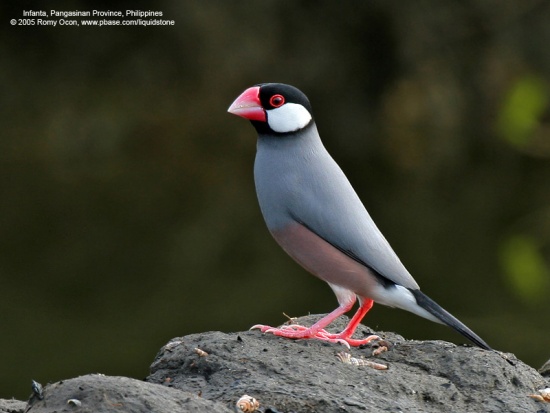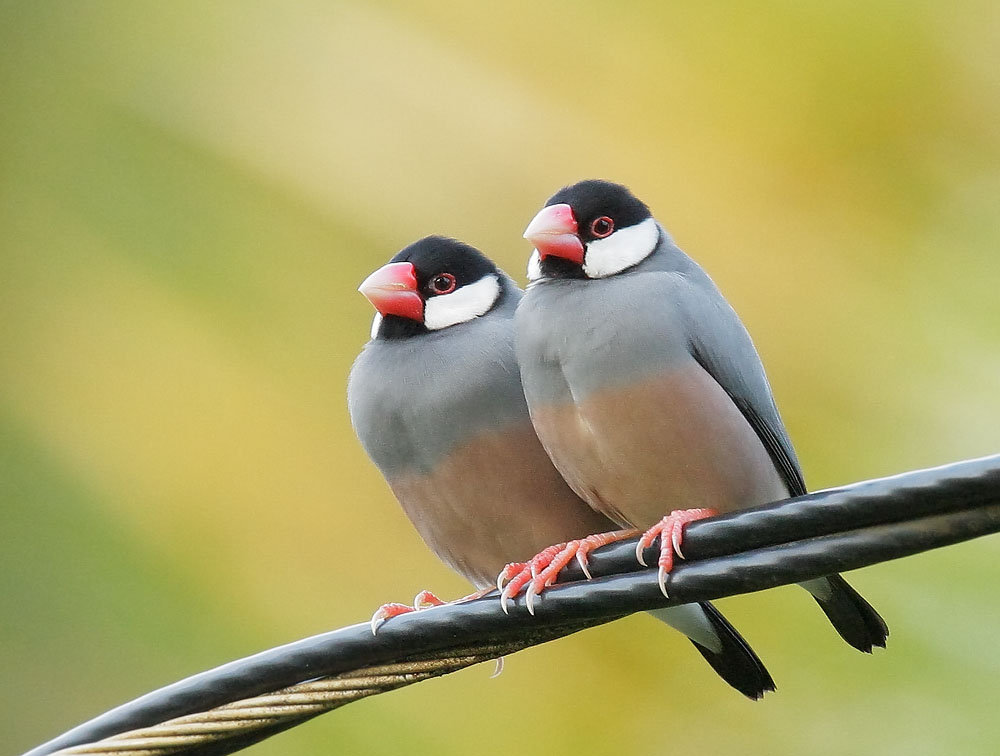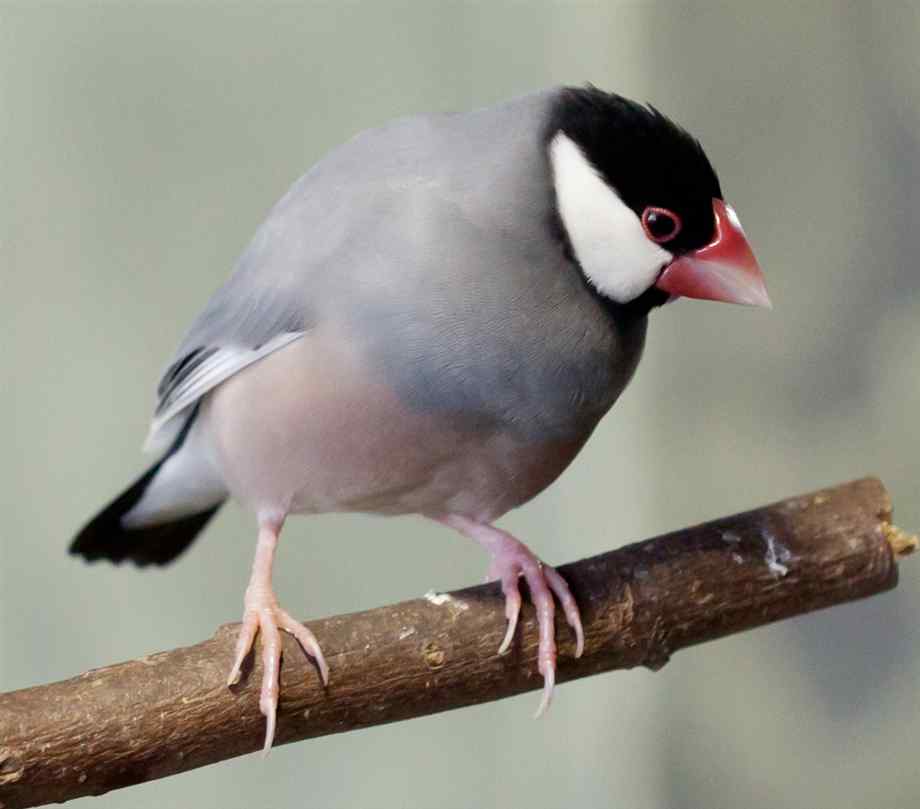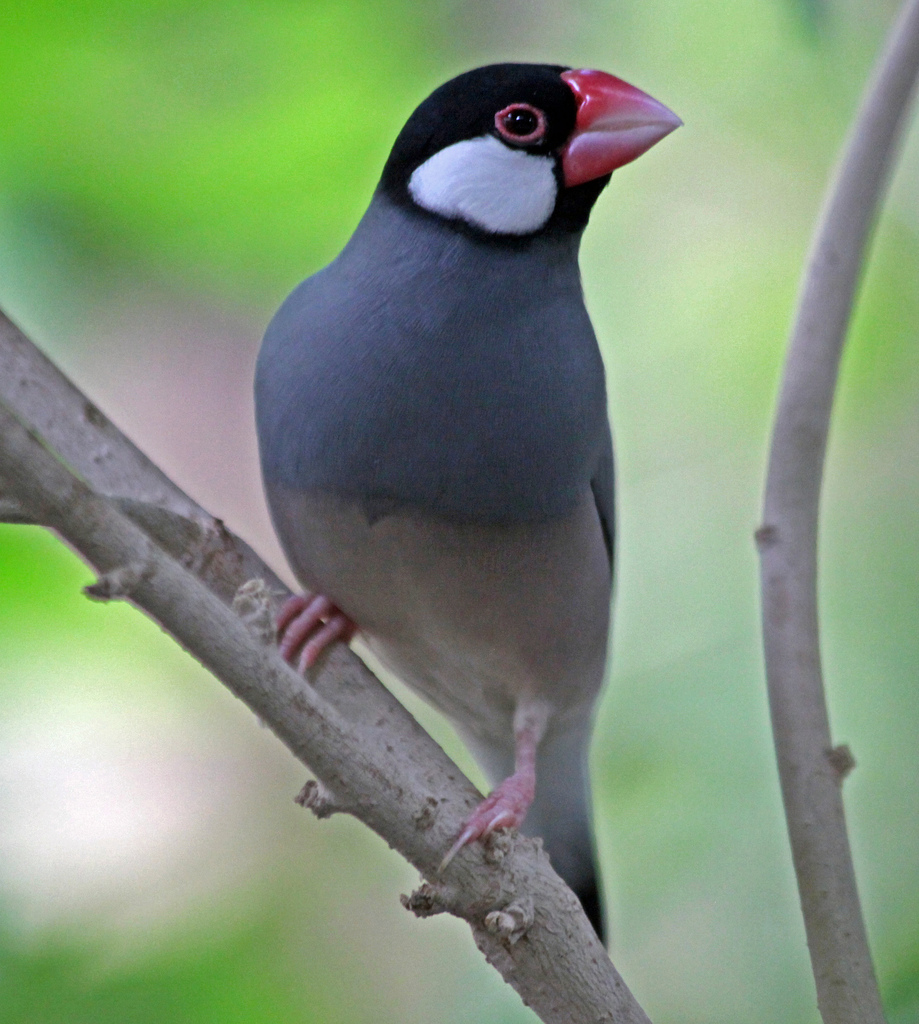
Padda oryzivora
SUBFAMILY
Lonchurinae
TAXONOMY
Loxia oryzivora Linnaeus, 1758.
OTHER COMMON NAMES
English: Ricebird, Java temple bird, Java finch, rice munia,
paddy bird; French: Padda de Java; German: Reisfink; Spanish:
Gorriуn de Java.
PHYSICAL CHARACTERISTICS
5.1–6.7 in (13–17 cm). Sexes alike. Upperparts are gray, the head
and tail are black, the underparts are rosy, the cheeks are white,
and the bill is bright pink to red. Young and immature Javas are
dull brown and gray, with bill darker than that of adults.
DISTRIBUTION
Found naturally only on the island of Java. Introduced in many
areas throughout the world including numerous south Pacific
islands, southeast Asia, Hawaii, Puerto Rico, and Florida.
HABITAT
Found in open woodland, grassland and savanna, but more
common in cultivated and inhabited areas.
BEHAVIOR
Occurs in pairs or in small flocks, although large flocks usually
gather in rice fields. The call is a “tchuk” while the song is a
mixture of “diks,” “tchuks,” “wees,” and clicks.
FEEDING ECOLOGY AND DIET
Feeds in vegetation or on the ground on a variety of seeds,
fruits, and small insects.
REPRODUCTIVE BIOLOGY
Nest is built in tree holes or crevices in buildings. It is
roundish in shape and composed of grass stems. Four to six
white eggs are incubated for 13–14 days.
CONSERVATION STATUS
CITES: Appendix II. IUCN considers this species Vulnerable.
Causes of population decline in the native range include trapping
of live birds for the pet trade, hunting for sport and food,
and raiding of eggs from the nest to decrease their numbers
and therefore their depredation of rice crops.
SIGNIFICANCE TO HUMANS
This species has long been kept in aviculture where it has been
domesticated and where several color mutations have been developed.
On its native island of Java, it is hunted for human
consumption and persecuted for its impact on rice crops.
Other popular Animals
Photo Gallery of - Java sparrow




 Animalia Life
Animalia Life